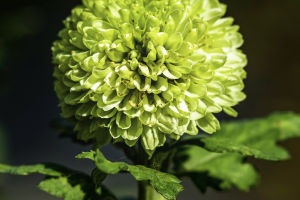Rising gracefully from the serene landscape of Japan, Mt. Fuji stands as an iconic symbol of beauty, strength, and tranquility.
This majestic volcano, located about 100 kilometers southwest of Tokyo, has captivated the hearts and minds of people for centuries.
With its snow-capped summit, symmetrical cone shape, and awe-inspiring presence, Mt. Fuji is a destination that beckons adventurers and nature enthusiasts from around the world. Let’s delve into the allure and mystique of Mt. Fuji, exploring its rich history, cultural significance, and breathtaking natural beauty.
Geographical and Geological Marvel:
At 3,776 meters, Mt. Fuji is Japan's highest peak and an active stratovolcano that stands tall amidst the Fuji-Hakone-Izu National Park. Formed over thousands of years by successive eruptions, this colossal mountain features a perfectly symmetrical volcanic cone adorned with five distinct stations.
From the lush greenery surrounding its base to the snow-dusted upper reaches, the landscape presents a captivating contrast of colors and textures that enthrall visitors throughout the year.
Cultural and Spiritual Significance:
Beyond its physical grandeur, Mt. Fuji holds immense cultural and spiritual importance for the Japanese people.
Countless people undertake the arduous journey to climb its slopes, seeking enlightenment, spiritual purification, and personal introspection. The practice of scaling Mt. Fuji, known as "Fujisan-ko," is regarded as a spiritual endeavor that fosters endurance, discipline, and a deep connection with nature.
Seasons of Splendor:
Mt. Fuji's beauty evolves with the changing seasons, each offering a unique and awe-inspiring spectacle. In spring, delicate cherry blossoms paint the surrounding landscape in hues of pink, creating a breathtaking contrast against the mountain's snowy crown.
The summer months invite hikers and mountaineers to ascend their slopes, where they are rewarded with panoramic views of the surrounding countryside and shimmering lakes. Autumn transforms the foliage into a vibrant tapestry of reds, oranges, and gold, casting a spellbinding aura over the mountain. And in winter, Mt. Fuji dons a majestic cloak of snow, glistening like a diamond in the sunlight.
The Fuji Five Lakes:
Nestled at the northern base of Mt. Fuji lie the Fuji Five Lakes, a picturesque region that adds to the allure of the mountain. Lake Kawaguchiko, the largest of the five lakes, offers postcard-perfect views of Mt. Fuji's reflection on its tranquil waters. The area surrounding the lakes boasts hot springs, nature trails, and museums, providing visitors with a harmonious blend of natural beauty and cultural experiences.
Capturing the Essence:
Mt. Fuji's grandeur has inspired countless artists, writers, and poets over the centuries. Hokusai's iconic woodblock prints and countless haiku poems have immortalized the mountain's beauty in art and literature. Today, aspiring photographers and artists flock to Mt. Fuji to capture its ethereal essence and convey its timeless allure through their creative expressions.
Mt. Fuji stands as a testament to the beauty and power of nature, captivating all who set eyes upon its majestic form. From its awe-inspiring geological origins to its deep-rooted cultural significance, this iconic volcano continues to evoke a sense of wonder and reverence.
Whether admired from a distance, climbed to its summit, or explored in the surrounding areas, Mt. Fuji is an experience that leaves an indelible mark on the soul. Its eternal beauty and enigmatic presence serve as a reminder of our connection to the natural world and the enduring legacy of human exploration and inspiration.


